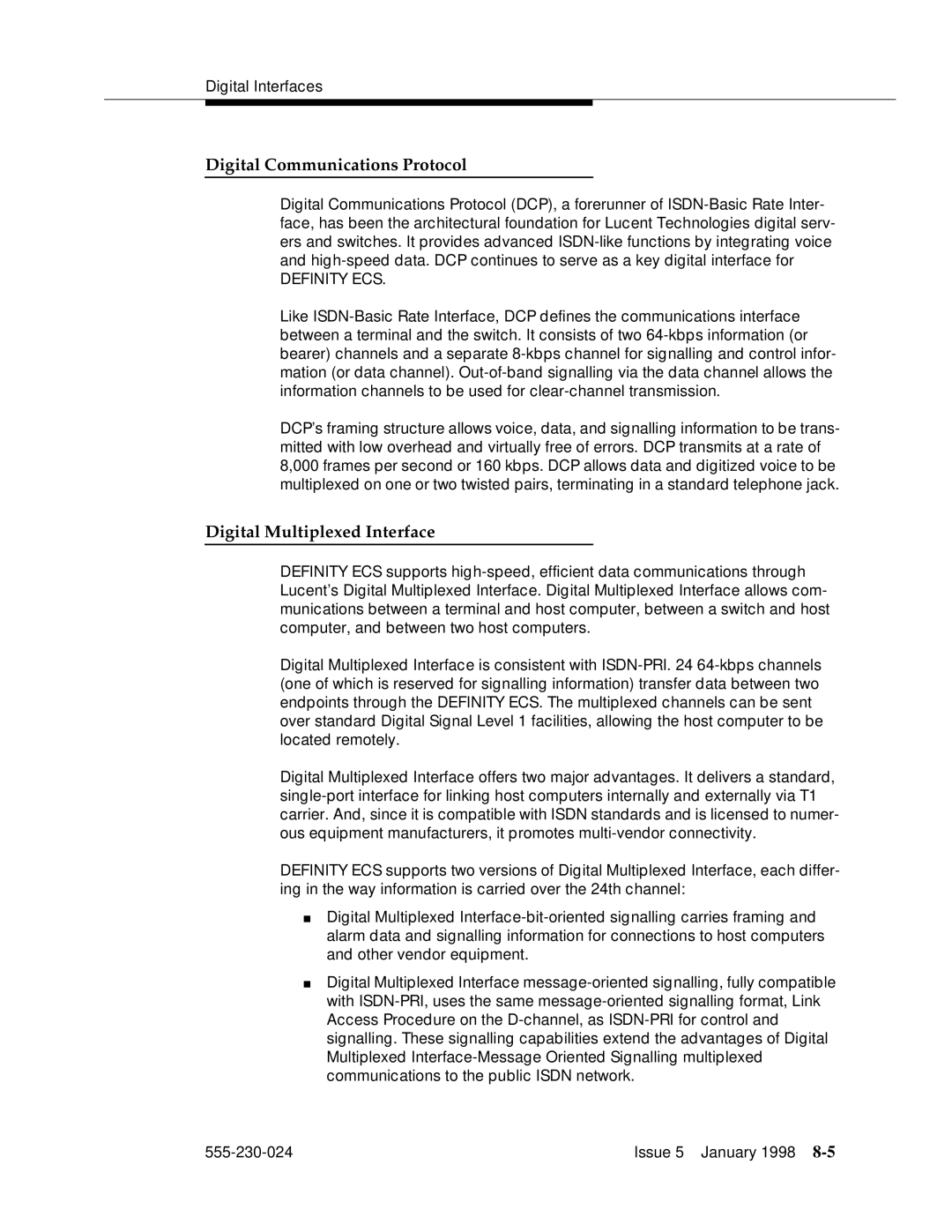
Digital Interfaces
Digital Communications Protocol
Digital Communications Protocol (DCP), a forerunner of
DEFINITY ECS.
Like
DCP’s framing structure allows voice, data, and signalling information to be trans- mitted with low overhead and virtually free of errors. DCP transmits at a rate of 8,000 frames per second or 160 kbps. DCP allows data and digitized voice to be multiplexed on one or two twisted pairs, terminating in a standard telephone jack.
Digital Multiplexed Interface
DEFINITY ECS supports
Digital Multiplexed Interface is consistent with
Digital Multiplexed Interface offers two major advantages. It delivers a standard,
DEFINITY ECS supports two versions of Digital Multiplexed Interface, each differ- ing in the way information is carried over the 24th channel:
■Digital Multiplexed
■Digital Multiplexed Interface
Issue 5 January 1998 |
